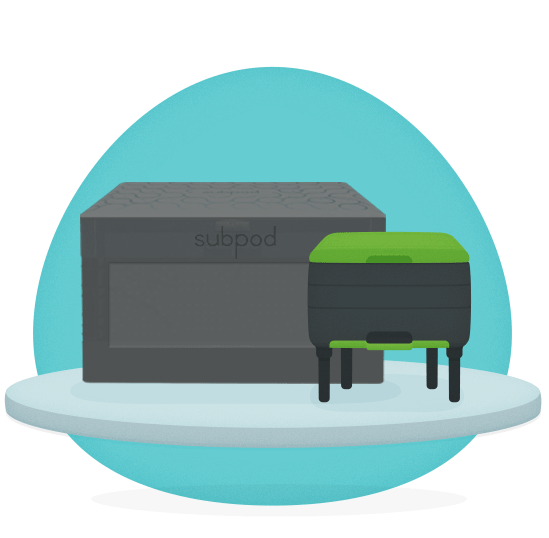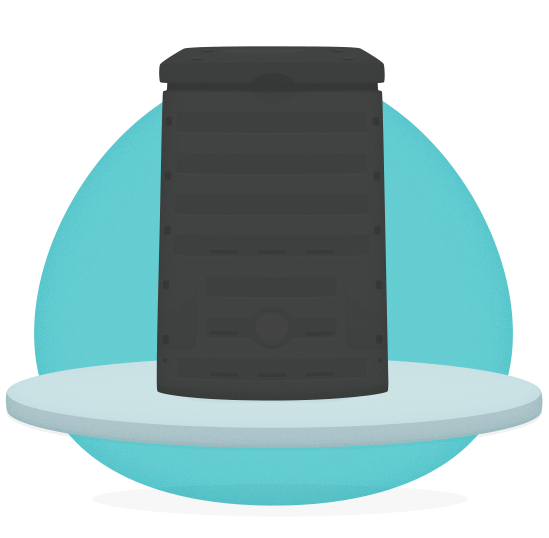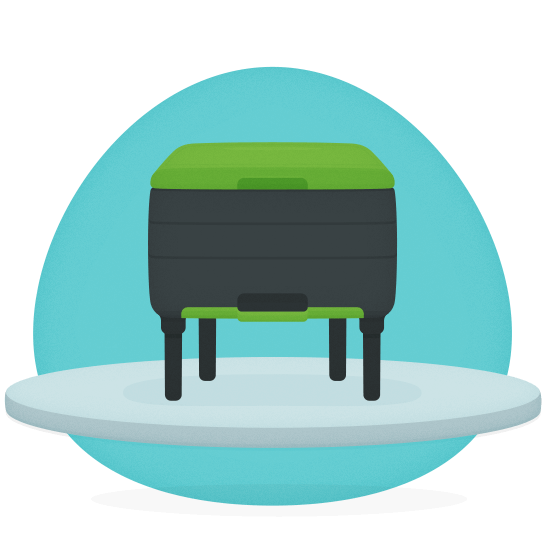Επιλέξτε ένα τεστ
Τι ταιριάζει καλύτερα στις ανάγκες σας, ο κάδος κομποστοποίησης ή η φάρμα σκουληκιών;Kομποστοποίηση
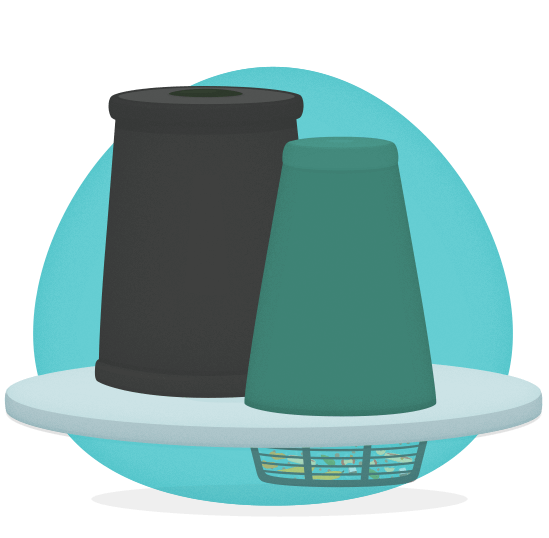
The different composting systems all accelerate nature's natural processes by heating up the compost and concentrating the microbes into a confined space.
Composting systems vary in what they recycle, including all types of organic waste such as food, paper, cardboard and garden materials. They all process larger volumes, making them suitable for households with a lot of food and/or garden waste.
Traditional (also known as above ground) compost bins need to be placed on soil. As the scraps break down, nutrient-rich liquid will disperse into the surrounding soil leaving rich compost to be harvested from the bottom every 6-12 months. They require regular (twice weekly) turning with an aerator.
Tumbling composters sit off the ground and can be placed anywhere, including balconies. The liquid from this process drips out and can be harvested or allowed to soak into the ground below. They require regular rotation with a hand crank or by rotating the drum directly, and produce rich compost in around 3-6 months (a little faster than traditional systems).
Solar composters are partially dug into the ground and capture more heat from the sun which aerates the compost without the need to turn it. So, they are faster than the other two systems and require less maintenance. They do not compost garden organics but do process all kinds of food waste and even pet poo!
Traditional Composting
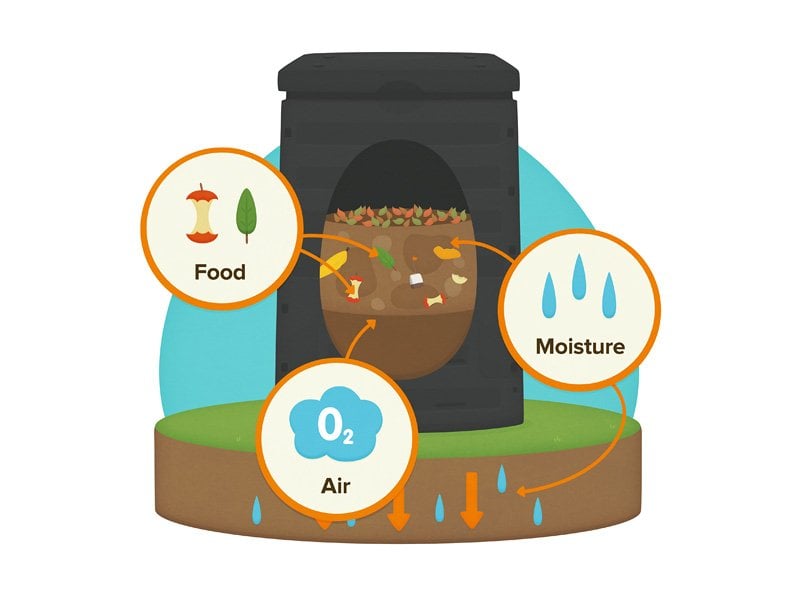
Works by accelerating nature’s natural process of breaking down organic waste into a rich nourishing compost, teeming with life and a supercharger for your garden.
Composting systems recycle all types of organic waste including food, paper, cardboard and garden materials. This makes them perfect for larger households.
Open-bottom units need to be placed on soil. As the scraps break down nutrient-rich liquid will disperse into the surrounding soil. After ~6 months compost can be harvested from the bottom.
Tumbler Composting
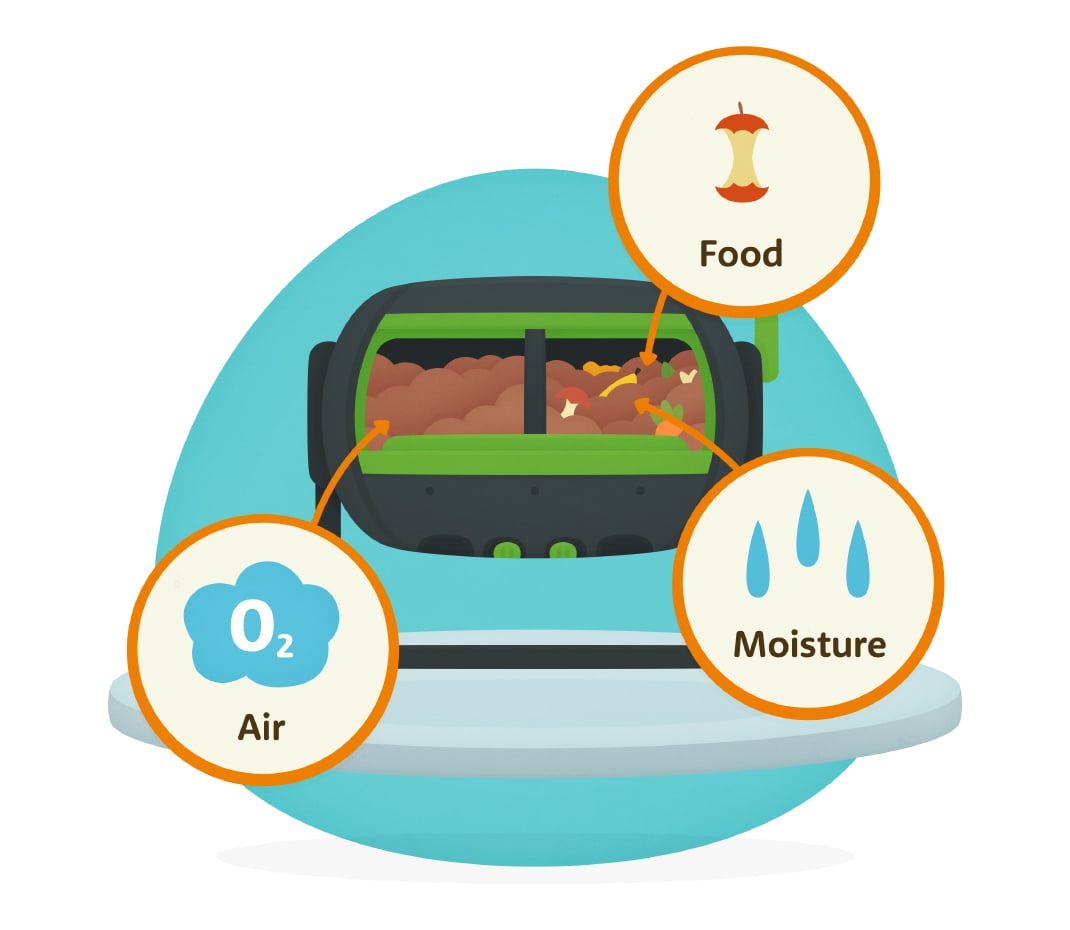
Works by accelerating nature’s natural process of breaking down organic waste into a rich nourishing compost, teeming with life and a supercharger for your garden.
Composting systems recycle all types of organic waste including food, paper, cardboard and garden materials. This makes them perfect for larger households.
Tumblers sit off the ground and can be placed anywhere, including balconies. As the scraps break down nutrient-rich liquid will drain from the tumbler and can be collected to fertilise your garden. After one chamber is full you can let the compost mature whilst filling the other. After ~6 months you can harvest the mature compost.
Φάρμα σκουληκιών
Traditional Worm Farming

Works with the help of wriggly warriors who chew through your food scraps, producing nutrient-rich worm castings and liquid fertiliser.
Worm farms recycle fruit and vegetables scraps, excluding citrus, onion, garlic and chilli.
The units can be placed indoors or outdoors, in a sheltered location out of the wind, rain and direct sunlight.
With a little tender loving care, worms will chew through your food scraps to produce nutrient-rich worm castings which can be harvested every 2-6 months. Liquid fertiliser also flows out of the farm on a regular basis, which can be diluted 10 to 1 with water to create free organic fertiliser for your garden.
Choose from the Farm, our compact, stylish award-winning worm farm made here by the Compost Revolution in Melbourne, Australia, or the large capacity Hungry Bin, made in New Zealand and ready to much through 2L of good a day!
In-Ground Worm Farming
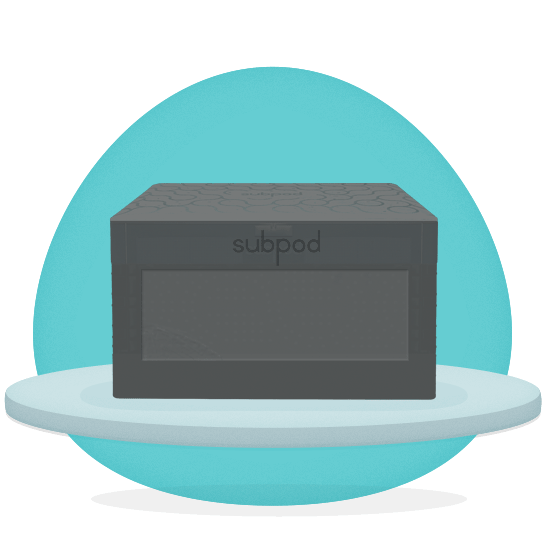
Works with the help of wriggly warriors who chew through your food scraps, producing nutrient-rich worm castings and nutrients for the surrounding soil.
Below ground worm farms recycle fruit and vegetables scraps, even small amounts of citrus, onion, garlic and chilli.
These units can be installed drectly into soil or n raised garden beds. Although under ground it is still beneficial to choose a sheltered location out of direct sunlight if you can.
With a little tender loving care, worms will chew through your food scraps to produce nutrient-rich worm castings which can be harvested every 3-6 months. Ovee time the garden surrounding your under ground worm farm will be rich and thriving due ot the nutrient flow from the farm ito the surrounding soil.
Choose from the Subpod Classic, with its dual chambers for larger capacity (up to 20L a week!) and easier casting harvesting, or the Subpod Mini, designed for smaller spaces and food quantities (about 10L a week).
Compost bins add heat to speed up the process via above ground, partially buried, or rotating chambers.
- Processes lots of food scraps (limit meat and diary).
- Above ground and tumblers compost garden waste too.
- Low maintenance.
Produces rich harvestable compost for your garden and the sourrounding soil, plus tumblers produce liquid fertiliser.
See benefitsHungry worms break down food scraps into solid and liquid nutrients in traditional multi-tray and new below ground farms.
- Processes small to medium amounts of food scraps, primarily fruit and vegetables.
- Suitable for indoor as well as outdoor placement.
- A bit more maintenance.
All worm farms produce rich harvestable worm castings. Traditional farms also produce lots of liquid fertiliser for your garden.
See benefitsTraditional compost bins accelerate nature's nutrient reycling using heat created within above ground chambers or rotating tumblers.
- Processes lots of food scraps (limit meat and dairy) and garden waste.
- Place above ground units on open soil. Tumblers can go anywhere including balconies.
- Low maintenance.
Produces rich compost for your garden (tumblers also produce liquid fertiliser).
See benefitsTumbler compost bins accelerate nature's nutrient reycling using heat created within rotating chambers.
- Processes lots of food scraps (limit meat and dairy) and garden waste.
- Tumblers can go anywhere including balconies.
- Low maintenance.
Produces rich compost and liquid fertiliser for your garden.
See benefitsHungry worms break down food scraps into solid and liquid nutrients in multiple trays within the farm.
- Processes small to medium amounts of food scraps, primarily fruit and vegetables.
- Suitable for indoor as well as outdoor placement.
- A bit more maintenance.
Produces rich harvestable worm castings as well as lots of liquid fertiliser for your garden.
See benefitsHungry worms break down food scraps into solid and liquid nutrients in the ground.
- Processes medium to large amounts of food scraps, primarily fruit and vegetables.
- Suitable for gardens with good draining soil and raised beds
- A bit more maintenance (including aeration)
Produces rich harvestable vermicompost and nurtures the surrounding soil via worm movement and leachate draining.
See benefits


